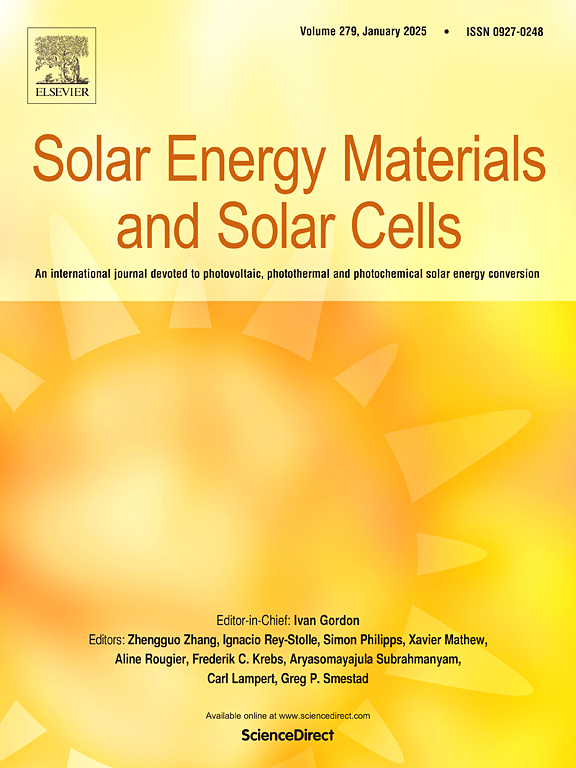Less is more: Enabling low-filled electrically conductive adhesives for shingled solar cell interconnection using the capillary suspension concept
IF 6.3
2区 材料科学
Q2 ENERGY & FUELS
引用次数: 0
Abstract
Lead-free, low temperature materials for solar cell interconnection gain relevance in upcoming cell and module concepts. Electrically Conductive Adhesives (ECAs) are such materials but typically come with a high silver content. We herein give an overview on ECA requirements for shingled cell interconnection. Regular ECAs and stabilized ECAs with varying filler content were characterized regarding their rheological, curing, electrical and mechanical behaviour and their performance in modules. It was found that 20 vol% silver is necessary to meet the electrical requirements with a regular epoxy-based ECA containing micron-sized silver flakes. Regarding mechanical properties, as little filler as possible is favourable. To fulfil both the electrical and mechanical requirements, application of the capillary suspension concept to ECAs was found to be suitable. Such an ECA with only 5 vol% silver filler exhibits a volume and contact resistivity of (4.5 ± 0.5) 10−3 Ω cm and (0.026 ± 0.006) mΩ cm2, resp., and a high lap-shear strength of (17 ± 4) MPa. Testing at both 140 °C and 200 °C curing temperatures showed that modules with low-filled and highly-filled ECAs achieved comparable initial efficiencies. After damp heat (DH500) testing, modules with capillary suspension ECA showed an efficiency loss of −0.8 % ± 0.4 %, compared to −2.5 % ± 1.1 % for highly-filled ECA. After thermal cycling (TC200), losses were −0.6 % ± 0.5 % versus −1.1 % ± 0.5 %. Both ECA types maintained efficiency losses below 1 % in mechanical load tests. These results demonstrate the potential for silver reduction in shingled solar cell modules through the capillary suspension concept.

求助全文
约1分钟内获得全文
求助全文
来源期刊

Solar Energy Materials and Solar Cells
工程技术-材料科学:综合
CiteScore
12.60
自引率
11.60%
发文量
513
审稿时长
47 days
期刊介绍:
Solar Energy Materials & Solar Cells is intended as a vehicle for the dissemination of research results on materials science and technology related to photovoltaic, photothermal and photoelectrochemical solar energy conversion. Materials science is taken in the broadest possible sense and encompasses physics, chemistry, optics, materials fabrication and analysis for all types of materials.
 求助内容:
求助内容: 应助结果提醒方式:
应助结果提醒方式:


